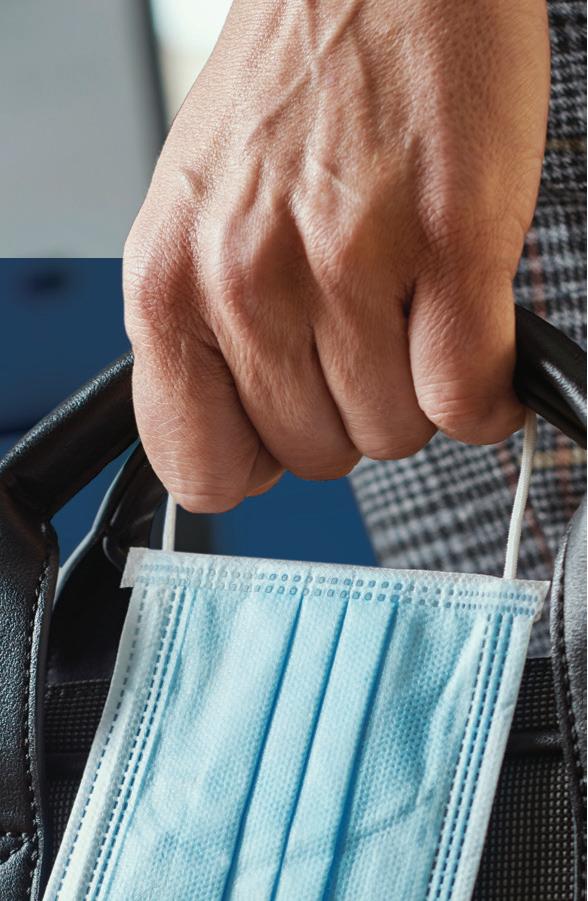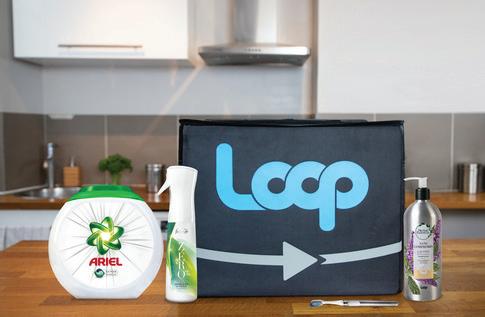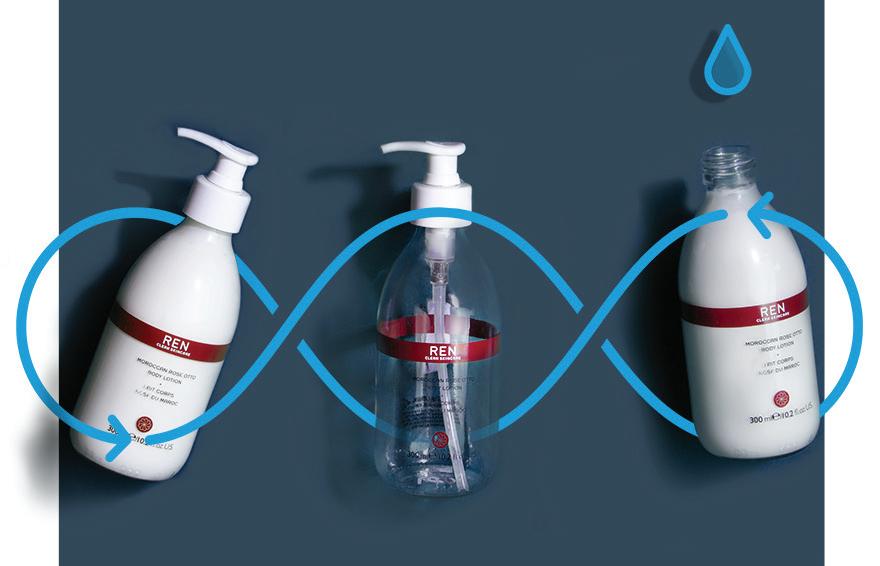
13 minute read
Traceability
3 EPCIS Data Exchange Issues in Pharma Traceability
KEREN SOOKNE, DIRECTOR OF EDITORIAL CONTENT
1. The global GS1 standard, EPCIS, offers a common information exchange language.
TOP THREE TAKEAWAYS
2. In AmerisourceBergen’s initial testing, nearly every EPCIS file had data issues. 3. Conformance testing services have emerged to cut down on wasted back-and-forth.
Pharma companies continue to make inroads to meet the DSCSA 2023 requirement for unit-level traceability at each change of ownership between trading partners. “Capturing and exchanging information at this level of specificity requires a common information framework,” explained Gary Lerner, president at Gateway Checker Corporation, at the GS1 Connect: Digital Edition virtual conference in June.
“This information framework captures what happens in the physical world with an electronic twin, essentially an information encoded representation of packing and shipping events that can be exchanged with trading partners. What’s needed to accomplish that is a common vocabulary and structure that enables trading partners to then share and exchange essential trading information in a consistent, accurate, and interoperable manner,” said Lerner. Without a common standardized approach, there will be considerable waste in time and effort with trading partners negotiating the structure and content in each point of connection.
EPCIS
Lerner pointed to the value of the global GS1 standard, EPCIS (Electronic Product Code Information Services), which enables the common information exchange language that can be shared. “However, EPCIS is a general purpose exchange standard. Application-specific standards are therefore necessary to tailor EPCIS to
suit a specifi c industry and application. In 2015, the GS1 US Healthgoing through downstream distribution at a case level. That would care working group recruited more than 50 companies representing be understandable. This is something that is shipped typically at a cross section of the pharmaceutical industry to adapt EPCIS to the unit level. address DSCSA specifi c requirements. And in 2016, the application “At ABC, we shipped 3 million units outbound every day, and we standards governing DSCSA traceability were published. Adopting must make sure that all the data is available to us on the inbound these standards therefore helps diff erent businesses within the drug shipment. So when we send out nearly 4,000 purchase orders to supply chain to more effi ciently and eff ectively connect and share manufacturers a day, we’re getting back nearly 4,000 shipments information,” he said. every day. Some of them are one case and Challenges of data exchange loads for a single purchase order. So it’s very
As testing is underway, AmerisourceBerimportant that that data for the inbound gen Corporation (ABC) is already seeing shipment to us is accurate because if it isn’t, issues with EPCIS fi les coming in from drug it will impact our ability to receive the prodmanufacturers. Jeff Denton, vice president, uct,” said Denton. global secure supply chain at ABC, said at some of them are multiple tractor trailer this point, they’ve received about 30 to 40 Testing delays fi les and “nearly every single one of them Hidden issues in bills impede a distribuhad issues upfront with their initial testing. tor’s ability to pick and ship the product to I don’t think I had a single fi le come in for customers downstream. All the issues listed the fi rst time that was accurate.” ↑ Jeff Denton, vice president, global above lead to delays in testing. “Once an
He shared three of the issues observed: secure supply chain at AmerisourceBergen Corporation (ABC). issue is identifi ed by a system when we’re
Event time is missing: Denton explained going through the test phase with a trading that event time describes when something partner, all the processing of that fi le stops. occurs such as commissioning a bottle on So we go back and forth with manufacturers the packaging line, packing it into a case, and in some cases, we’ve had to do that for or shipping it. Those events need to be in three months,” Denton said. a sequence. When the data arrives at your This may mean emails, phone calls, and downstream trading partner, he said, “The possibly even conference calls. It’s a considvery fi rst thing their system is looking for erable amount of activity to remedy and is making sure it’s all in sequence, and they ensure the sender understands why the fi le use that event time as a process to do that.” is incorrect or incomplete. Denton noted,
In one case, the majority of the fi le was “We have made zero changes in our system. fi ne, but some events had dates missing. For It is completely designed around GS1 stansome reason, there isn’t consistency in the dards for EPCIS messaging. So what we’re event time being represented accurately or ↑ Gary Lerner, president at Gateway Checker Corporation. doing is we’re identifying the problems, being present. communicating back to the manufacturer
Duplicate SGTINs (serialized GTINs): One example he referred and then multiple retests.” to is a case of 12 identical bottles. “They all have the same GTIN, Once the initial problem is resolved, that’s it, right? Not so fast. but the serial numbers on each bottle are unique. We’re getting data Once the problem is fi xed and the processing passes, the system that now is showing the exact same serial number on more than one may fi nd yet another issue, stopping the process once again. “You bottle, which shouldn’t happen, whether it was in one case or diff erhave to fi x it and then start over. So delayed testing is a signifi cant ent cases, but we are fi nding that,” Denton said. issue for us when we’re talking 450 trading partners and only 30 or
No children: Another major error they’ve observed is a fi le lacking 40 currently onboarded,” said Denton. child records. “We get the serial number for the case, but we don’t There isn’t enough time between now and 2023 to devote these get the serial number for the contents of that case,” he explained. labor-intensive remediation eff orts to every trading partner. He
He recalled an example for a large fi le, where they had the chiladded, “Of course, there’s a lot of resource time on both sides with dren and the case for the majority of the shipment, but only had the sender and the receiver repeated retesting. And then all of this the case for some products. “This is not [a product] that would be relates to increased cost.”

Help is available sign up and ensure fi les are accurate before they come to ABC.
The good news is that GS1 has put together a conformance testing “Hopefully we can get to a point where you process one test fi le and process, hiring service providers to perform testing of EPCIS data. you’re accepted for being put into production. Data sharing is not
As Lerner explained, “To accomplish conformance and to take easy… moving from an ASN to an EPCIS fi le is quite a transition. the guesswork out, GS1 US Healthcare established a GS1 Trustmark. And the resources and resource skillsets are not always the same. The Trustmark signifi es that an EPCIS event fi le follows the format Be proactive in the steps that are necessary for success,” he said, and structure of the DSCSA application standard, and that this fi le keeping in mind the overall goal. “The key takeaway is we must all fully conforms to a pharmaceutical traceability scenario.” Lerner’s remain responsible in our ability to deliver for healthier futures.” company, Gateway Checker, established a conformance testing application which GS1 validated and certifi ed as a GS1 conformance Action item testing service in 2019, after a rigorous assessment against GS1 and Denton said it’s important to be sure you’re comfortable that the DSCSA standards. quality of your fi le is extremely high before testing with a trading
“This system assures that the fi le contains all of the appropriate partner. If you’re generating an EPCIS fi le, “I strongly recommend information such as trading partner and drug product information, you go through conformance testing fi rst.” and other elements required for conforming DSCSA transactions,” said Lerner. The submitted fi le is then assessed against a specifi c drug traceability scenario. If each of the conditions are met, Gateway certifi es the submission and informs GS1 that a GS1 Trustmark For the latest in traceability, make plans to can be issued. visit PACK EXPO International/Healthcare
Denton added, “So you’re able to prepare your fi les, send it to one Packaging EXPO 2020. For more information of these services, run it through their system very, very quickly and visit packexpointernational.com. come back to identify” if there are issues. Manufacturers are able to resolve and retest with the service providers in a faster manner. Then when they engage with trading partners such as ABC, they know the fi le meets all of GS1’s standards.
“It’s a proactive measure to ensure quality in your data sharing that is extremely important, more so now than Manufacturing ever,” said Denton, adding that multiple service providers are available for this Software to Help performance testing via GS1. Two key points to highlight: the with the New service providers use portals and they do not store any of the manufacturer’s Normal data. “When you sign up with one of them, you’re able to use their portal to run your process of testing with a fi le that you’ve created. Test results are From remote support and implementation services, cloud almost immediate, so you’re able to hosting options and more, DELMIAworks provides the react,” Denton noted. agile tools you need to adapt to COVID-19 challenges.
This means manufacturers eliminate troubleshooting emails, phone calls, and conference calls with trading partners, and they’re able to address issues and retest on their timeline.
Denton hopes that manufacturers







Loop Launches E-Comm Platform Nationwide
ANNE MARIE MOHAN, SENIOR EDITOR, PACKAGING WORLD
1. The Loop circular shopping platform offers consumers convenient, reusable packaging.
TOP THREE TAKEAWAYS
2. Loop will be launching in retail stores—including Kroger in the U.S.—in 2020. 3. Deposit costs for packaging have not been a deterrent to consumers thus far.

Consumers across the U.S. who are interested in shopping online for a range of grocery, household, and personal care products in gorgeously designed, durable, and resusable packaging will now have the chance with the nationwide launch of Loop.
Since May 2019, the ground-breaking Loop circular shopping platform has been available in 10 states in the Northeast and in Paris. According to Tom Szaky, founder of recycling company TerraCycle and of Loop, the 10-month pilot allowed participating Consumer Packaged Goods (CPG) companies, retailers, and Loop itself to gain insights and tweak the program for wider availability.
Just as exciting, if not more so, accord↑ For those consumers going the e-commerce route, there is a $20 shipping fee for orders ing to Szaky, is the news that Loop will be under $150. In addition, the tote used to deliver and return product comes with a $15 deposit fee. launching in retail stores, including Kroger in the U.S., Carrefour in France, and AEON in Japan, later this year. a platform and not a producer or retailer.” He continues, “By being
Currently 400 brands have joined Loop, 20% of which are now a platform, it is really our fantastic brand partners that are doing all available for purchase on Loopstore.com and 80% of which are still the production and ramping up, and the retailers that are doing the in development. Says Szaky, it can take a CPG anywhere from six scale up and later the in-store deployments. What we really have to to 18 months from the time they join Loop until they have prodramp up is the ability to accept that used packaging, sort it out, and uct ready to ship. Among some of the more well-known CPGs that clean it. And that’s an area that TerraCycle has almost two decades have signed on are Seventh Generation, Clorox, Procter & Gamble, of experience doing in disposables. Now we just have to bring the Nestlé, Unilever, and Mars Petcare. Loop also sells a “private-lasame experience to reusables.” bel” brand, Puretto, which Szaky says is being used by name-brand With the e-commerce model, all packaging—both fi lled and companies to test products on the platform while they develop their empty—is handled through Loop’s Northeast location, from which own, unique version. “As soon as that version is live, we disable the it sends orders to consumers and where it cleans the empty packPuretto version,” he explains. aging. Loop will also soon be adding another location on the West
Szaky notes that the rapid speed of the nationwide launch—Loop Coast. “As the stores move into bigger and bigger volumes, we will was only just unveiled in February 2019—is due to the fact that “it’s deploy in total seven major facilities in the U.S.,” Szaky says. “I
expect that to take about two to three years.” Outside the U.S., Loop has one facility in each country in which it operates and is planning to add more.
When the in-store platform becomes available, CPGs will supply the stores with product directly. Then, when consumers are through with the product, they will drop off the empty packaging at the store,

↑ When the in-store platform launches, CPGs will supply product to the store. Consumers will drop used, empty packaging at the store, where Loop will pick it up for cleaning. and Loop will pick it up for cleaning.
For those consumers going the e-commerce route, there is a $20 shipping fee for orders under $150. In addition, the tote used to deliver and return product comes with a $15 deposit fee. Deposits are also required for every package and range anywhere from $1.25 for a glass liquid soap dispenser bottle from Soapply, for example, up to $10 for a rust-resistant metal container with one-touch dispensing lid for Clorox disinfecting wipes.
One of the biggest learnings from the Loop pilot says Szaky is that the deposit costs have not deterred consumers from using Loop. “I thought they would be, but they haven’t in any capacity,” he says. “Even deposits as high as $10 have not been a deterrent. So we’re very, very happy about that.”
Not only that, Szaky says, but they also found that within 90 days of purchase, there was a 97% return rate for the packaging by consumers. “I was surprised, but I think it has to do with the fact that people want the product inside, and they’re happy to have us professionally clean it and have it professionally refi lled so they can access it again.”
For the in-store business, the only deposits are for the containers, which consumers are refunded when they return the empty packaging to the store.














